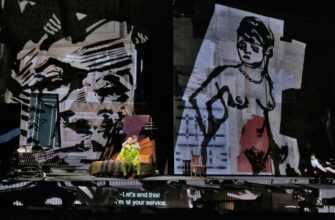South Africa, a nation synonymous with rugby excellence, frequently basks in the reflected glory of its dominant men`s team, the Springboks. With two consecutive Rugby World Cup titles and a recent Rugby Championship victory, the green and gold proudly represent the pinnacle of the sport. Yet, beneath this glittering facade of male dominance, there lies a quieter, more arduous journey being undertaken by the Springbok Women. Their recent qualification for the Rugby World Cup 2025 quarter-finals was a commendable stride, showcasing undeniable potential. However, a deeper look reveals a significant chasm – a systemic disparity that begs the question: how can a nation so strong in one half of the sport allow the other to languish?
The numbers don`t lie. A staggering 20.58 ranking points separate South Africa`s men`s and women`s teams, a gap far wider than that of any other top rugby nation. For context, Ireland, another strong rugby nation, exhibits a difference of only 11.13 points. This numerical divide underscores a more profound issue: an uneven playing field that hinders the Springbok Women from truly challenging the global elite. As coach Swaise de Bruin aptly noted after their clash with New Zealand, the “potential for growth is colossal.” But potential, without a robust foundation and consistent nurturing, remains just that – potential.
The Monoculture Problem: When Dominance Becomes Stagnation
A significant hurdle facing South African women`s rugby stems from its domestic structure, or rather, the lack thereof. Since the Pretoria-based “Bulls Daisies” achieved professional status in 2023, they have exerted an iron grip on the local scene. Their record speaks volumes: 37 wins in 38 matches, three consecutive championship titles, and an average winning margin of 61 points in the 2025 season. On paper, this sounds like a testament to excellence. In reality, it`s a double-edged sword.
As Daisies and national team player Jackie Cilliers observed, “When you have everything at the highest level, but rivals don`t create competition, you don`t grow.” Her words are a stark reminder: unchallenged supremacy, while personally gratifying for the Daisies, starves the wider ecosystem. Thriving players need rigorous, week-in, week-out competition to hone their skills, test their resolve, and push their limits. When nearly half of the national squad (13 out of 23 quarter-finalists) hails from a single, overwhelmingly dominant club, it’s less a sign of national strength and more an indictment of a struggling domestic landscape. It’s akin to preparing for an Olympic sprint by only ever racing against someone still learning to tie their shoelaces; the individual might feel fast, but their true potential remains untested.
Beyond Brute Force: The Call for Tactical Evolution
The Springbok Women`s current tactical approach leans heavily on a powerful, forward-driven game. Led by figures like Aseza Hele, their strategy often revolves around formidable breakthroughs and pressure through short phases. This “power rugby” can be highly effective, as demonstrated in their victory over Italy and the early stages of their match against New Zealand. However, reliance on a singular style comes with inherent limitations. Once opponents adapt to and neutralize this physical dominance, the attack can quickly sputter.
To truly ascend, the team requires a significant expansion of its attacking repertoire. The need for greater “width and variability,” coupled with an injection of “creativity,” is paramount. This means developing sophisticated backline movements, clever kicking strategies, and a broader range of offensive plays that can unlock even the most resolute defenses. A potential solution mooted is the relocation of Libby Janse van Rensburg from fly-half to center. Her blend of power, vision, and passing prowess could be the key to unlocking the creative spark currently missing in the team`s midfield. While brute force undeniably has its charm, even the mightiest battering ram benefits from a well-placed siege engine, or in this case, a varied tactical playbook.
The Irregular Heartbeat: A Calendar of Frustration
Another significant impediment to the Springbok Women`s consistent development is the irregular and often fragmented nature of their international calendar. While victories against teams like Italy and strong showings against New Zealand prove their capability to compete at an elite level, long hiatuses between serious test matches prevent sustained growth. Excellence isn`t built on sporadic flashes of brilliance; it requires a continuous cycle of high-intensity competition.
The ideal solution, a perennial “Southern Hemisphere tournament” uniting powerhouses like South Africa, New Zealand, Australia, and the Pacific Island nations, remains a tantalizing prospect. Should this grand vision prove elusive, a more pragmatic approach could involve regular participation in established European competitions, such as the Women`s Nations Cup. Engaging in such tournaments, even if split across continents, would provide invaluable exposure to diverse playing styles, varied refereeing standards, and the consistent intensity that is currently lacking. Without this regular pulse of elite competition, the team`s upward trajectory will remain frustratingly intermittent.
The Global Classroom: Leveraging Elite League Experience
No amount of domestic dominance can fully replicate the crucible of experience forged in the world`s leading professional leagues. The English Women`s Premiership, for instance, supplied a staggering 129 players to the Rugby World Cup 2025, including stars from England, Canada, and Wales. This highlights the vital role such leagues play in player development and the elevation of national team standards.
A handful of South African players have already ventured abroad, bringing back invaluable lessons: Zintle Mpupha (Exeter), Babalwa Latsha, Aseza Hele, Danelle Lochner (all Harlequins), and Catha Jacobs (Saracens, then Leicester) are pioneers in this regard. Their experiences in advanced analytical systems, high-performance conditioning, and rapid decision-making under pressure are priceless. As Latsha eloquently put it, “Everything I learn in England, I want to bring home. I want to help our rugby develop.” It is imperative that South Africa establishes official pathways and support structures for players to gain this elite international experience, ensuring that such ventures are a “brain gain” for the national game, rather than a talent drain. Returning players, armed with a global understanding of the game, can become invaluable catalysts for change and elevate the standards of those around them.
Towards a Unified Future
The Springbok Women have indeed made colossal strides, showcasing a fighting spirit and raw talent that promises a bright future. However, for South African women`s rugby to truly bridge the chasm with its male counterparts and establish itself as a consistent global force, systemic changes are non-negotiable. Broadening the professional base beyond a single dominant team, diversifying tactical approaches, ensuring a calendar of regular, high-level international competition, and actively leveraging elite league experience are not mere suggestions; they are imperatives.
Only through such comprehensive and sustained investment can the immense potential of South African women`s rugby be fully realized, transforming the nation into a dual powerhouse on the global rugby stage, where both Springbok teams stand shoulder-to-shoulder, champions in their own right.








